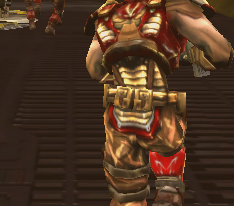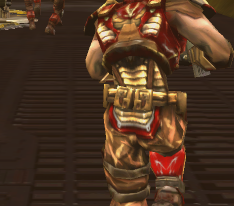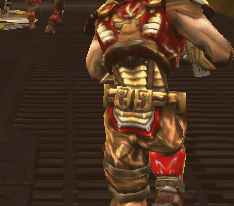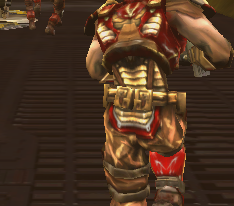Linux 3D AGP GPU Roundup: More Cutting Edge Penguin Performance
by Kristopher Kubicki on October 4, 2004 12:05 AM EST- Posted in
- Linux
FSAA and AF
Enabling and disabling Full Screen Anti Aliasing and Anisotropic Filtering for both cards was met with varying succes. 4X AA for the ATI cards was enabled by hand in the XF86Config file. We needed to include the additional options for our fglrx device after installing the driver properly:Option "FSAAEnable" "yes" Option "FSAAScale" "4" Option "FSAADisableGamma" "no" Option "FSAACustomizeMSPos" "no" Option "FSAAMSPosX0" "0.000000" Option "FSAAMSPosY0" "0.000000" Option "FSAAMSPosX1" "0.000000" Option "FSAAMSPosY1" "0.000000" Option "FSAAMSPosX2" "0.000000" Option "FSAAMSPosY2" "0.000000" Option "FSAAMSPosX3" "0.000000" Option "FSAAMSPosY3" "0.000000" Option "FSAAMSPosX4" "0.000000" Option "FSAAMSPosY4" "0.000000" Option "FSAAMSPosX5" "0.000000" Option "FSAAMSPosY5" "0.000000" Option "UseFastTLS" "0" Option "BlockSignalsOnLock" "on" Option "UseInternalAGPGART" "no" Option "ForceGenericCPU" "no" Option "EnablePrivateBackZ" "yes"
Pay considerable attention to the EnablePrivateBackZ option. Although documentation for that particular variable seems light, AntiAliasing refused to draw correctly without it. Without enabling that element on our tests beds, nothing would draw to the screen.
You may notice that we purposely have not discussed much about Anisotropic Filtering up until this point. There are currently no driver-level AF features in fglrx. This is a large problem with the Radeon cards in our lineup - but fortunately, we still have trilinear and bilinear filtering.
To enable FSAA for NVIDIA cards, we needed only to set the environmental variable $__GL_FSAA_MODE to 4 (AF is enabled similarly by setting $__GL_DEFAULT_LOG_ANISO). We do not need to restart X to enable FSAA or AF, which is a huge relief for us. However, attempting to find Anisotropic Filtering working correctly in a game setting proved difficult. Perhaps it was the way in which we configured our drivers, or perhaps some fluke in our testing methodology escaped us, but AF for NVIDIA cards did not work.
Since the AnandTech FrameGetter utility by default measures FPS once every second, we modified the source to take screenshots every tenth of a second for this portion of the test. After running the various benchmarks a few times, we had several hundred overlapping frames to choose some comparative screenshots for IQ testing. Below, you can see our capture of a soldier that shows two levels of anti-aliasing. Try as we could, there were no instances of one card rendering AA differently than the other. No driver cheating conspiracies today.
| None |  |
| 4X |  |
| Mouseover AA to No AA |
|
There is nothing really shocking in these benchmarks. AA is behaving the same as it would in Windows. It was worth checking to make sure, though. Using the same method as above, we can demonstrate some rudimentary advantages of trilinear filtering over bilinear filtering.
| Bilinear |  |
| Trilinear |  |
| Mouseover bilinear to trilinear |
|
Again, everything here is on par with Windows demonstrations of trilinear/bilinear filtering. There were no differences between the ATI and NVIDIA implementations of trilinear and bilinear filtering; we get the same images on both cards.










33 Comments
View All Comments
webleiws1122 - Wednesday, November 25, 2020 - link
<a href="https://getmecrack.com/utorrent-pro-crack/"&g... utorrent Pro </a>These Are the Software's Have You Seen These Amazing Links Check it out Please out
<a href="https://portabledownloads.com/utorrent-pro/ &... uTorrent Pro </a>
mczak - Monday, October 4, 2004 - link
"On our MSI nForce3 board, this should have been the nvidia_agp module. However, try as we could, we could not get nvidia_agp and fglrx to play well with each other."This is a mistake, you do not need (and it will not work) the nvidia-agp module. For all A64 based boards, no matter if the chipset is from sis, via, nvidia or someone else, you need the amd64-agp module instead. It might have just worked with that - suse 9.1 loads it automatically for K8T800 chipset, but I think for some reason it doesn't get automatically loaded for nforce3 chipsets. It might have just worked loading it manually, saving you some time :-).
"We are not entirely sure why, but even after completely removing the NVIDIA kernel module, we still had persistent errors installing the ATI drivers correctly."
Removing the kernel module will do nothing. Nvidia drivers replace some of XFree/Xorg libraries, which are incompatible (I think libglx.a is affected by that, but there might be more), and ATI does not have its own version of these files. Uninstalling the nvidia driver with its own installer (which has an uninstall option) should get the original version back in place afaik.
directedition - Monday, October 4, 2004 - link
Oh, and a note on some SDL games on SUSE. On games like UT (original) and many other games using the same old installer, you need to create /mnt/cdrom and mount your cdrom there, as the installers don't tend to look for SuSE's /media/dvd nonsense, and it will often keep asking you to insert the CDROM.directedition - Monday, October 4, 2004 - link
I can't belive noone's mentioned it yet, but Warcraft is an odd example of a game that tends to run better emulated under Cedega (SuSE 9.1) than natively on Windows. Blizzard has a decent relationship with Transgaming. While they won't do a native port of Warcraft III, they are willing to help Transgaming make their game compatible.I would definately like to see AnandTech take a look into this and why various Cedega games run better than others.
Ardan - Monday, October 4, 2004 - link
Gaming in linux doesn't take hours to achieve. If it took you hours to properly install something like, say, Enemy Territory, then you are doing it all wrong.I have set up gaming in linux on both an ATI and an nvidia card lately and neither are hassles. ATI's Linux development team has been making great strides, so don't sell them short. I fully expect them to start rolling along with new features and better support. Comparing them to when I used nvidia's older linux drivers to what they have now, it took a VERY long time to achieve. However, ATI is making strides in a shorter amount of time. Don't worry about that:)
I loved the article a lot as well, but I would like to point out that the latest ATI drivers are 3.14.1. I do not think that everything has to be open-source to be good in linux. ATI and nvidia are clearly capable of engineering great cards and great drivers, so I am okay with closed-source. Surely it must be an even bigger benefit to them to be able to see the source of the OS they're programming for.
Anandtech, keep up the good work on the Linux articles! They keep getting better and better.
ballero - Monday, October 4, 2004 - link
Great article.you can use "nvidia-settings" (the control panel) to set up both AA and AF
Pannenkoek - Monday, October 4, 2004 - link
UT is not a SDL game, but an OpenGL game in Linux. SDL is a library for making graphical applications easier (made by Epic, open source) and is comparable to DirectX excluding Direct3D.Graphics is a weak spot in Linux, mostly due to the fact that NVIDIA and ATi are paranoid to open their hardware spec so no open source cutting edge video drivers can be made. Stable video drivers, now that would be refreshing.
A stable Linux system will never lock completely, but insert proprietary closed source drivers and redirect all input to X and you get pretty close to the Windows experience.
Fortunately there is finally fast development in the X compartment now that Xfree is dying and with Xorg.
Illissius - Monday, October 4, 2004 - link
Nice article. Mostly mirrors my experience - I haven't been able to get ATi drivers to install at all (this was a few months ago) on either Mandrake, Knoppix (disk install), or Xandros, which was the point at which I gave up and got an nVidia card, and moved to Gentoo at the same time. Installing the drivers was pretty damn easy as far as Gentoo goes* - 'emerge nvidia-glx', add nvidia to the modules autoload list, change the driver in xorg.conf from 'nv' to 'nvidia', and I think that's about it. Of the games I tried (UT2003 demo, UT2004 demo, Wolfenstein: ET) all worked flawlessly, and as far as I can tell the same speed as under Windows. AA/AF worked also - nVidia has a nice graphical control panel for them too (called 'nvidia-settings' in portage); it's not as full featured as their Windows drivers, but it does the job.* What I like about Gentoo is that although you have to setup most things manually, you generally don't have to touch them again after you do. The distro gives you a lot more control over your entire system than 'user friendly' ones like SuSE/Mandrake/Fedora, as well. ie, if you're fascinated with customization, have tried far too many Windows tweak utilities, and can find your way around the registry well enough, there's a good chance it's the distro for you.
Lonyo - Monday, October 4, 2004 - link
#3, ATi is generally poorer with OpenGL games than nVidia, and Linux doesn't support DirectX (a Windows thing), so it's fairly obvious that the nVidia cards (which are better at OpenGL), will be better than the equivelant ATi cards (which are generally better at Direct 3D stuff - looking at NV3x vs R3xx)Lonyo - Monday, October 4, 2004 - link
Have you been working with the 3Dc people? (I notice one of their forum members featuring in a screenshot, an immature one IMO at that ;))Congratulations for putting up a Linux gaming article, it would be nice if you could do older cards though (I was thinking of setting up a machine with a GF4 Ti4400 to run Linux).